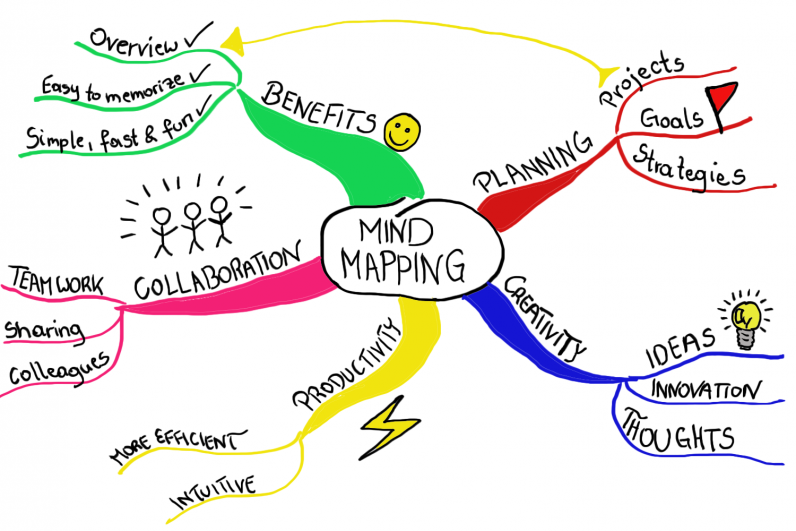Public speaking may not be an easy job for most of us but, we also need to understand that its an important part of communication. Public speaking somehow is related to your career success.
I have been speaking publicly since I was 10 years old and have catered thousands of people of different nationalities and intellect.
Today we will be learning quite a lot of things about how to speak effectively in front of people and how to impress people while you speak. Here is how we divide the below course, to make it easy to remember we made it into 3 Ps.
- Preparation: where we will learn to plan and prepare your presentation.
- Posture and physicality: here we talk about the body language.
- Pander the audience: Its important to keep the audience glued to what you speak. And how?

Why do we think public speaking is good?
Have a look at the figures below on people taking huge amounts per speech they make:
- Richard Branson, $100,000
- Bill Clinton, $150,000- $450,000
- Tony Blair, $616,000
- Donald Trump, $1-1.5 million
You may not want to make it your profession but what we intend to do here is to make you comfortable enough to stand and deliver in front of people.

It’s the Top fear in America:
It’s interesting to know that public speaking is the top fear in Americans even more than a snake or suicide.
Have a look at the chart below:

The Ast of public speaking:
Prepare:
To prepare you need to do the following things:
- Structure: how you organize your remarks and put them together
- Content: What it is you say
- Delivery: How you say it
First of all how you to create a structure:
- Research your audience
- Brainstorm and write everything
Its very important to know your audience and prepare accordingly may be something of their interest, maybe something which relates to them, for example, if its youth, its different, if its business people, its completely different, more details below.
Brainstorming for your next public speaking event may be very useful. There are different ways to brainstorm, one of the best ways to do is to mind map.
I will talk about mind mapping in detail later on but to give an idea you just put your random thoughts on the paper and then structure them, it lets you remember and jot down everything because if you structure and remember at the same time, there is a huge possibility for forgetting a lot of things.
It looks like this here:

Opening your presentation:
- Thank your audience.
- Ask a question/start a conversation.
- Use today’s date
- Joke: make it appropriate, and really funny.
- Tell a story.
- Fact
You need to create interest for the rest of the time, and its your first 5 mins. Believe it or not, but if your conquer the audience in the first 5 minutes, there is a huge possibility they are going to stick around.
One of the most popular ways is to start off with a story. If its personal its awesome, but it works wonders, make it relevant and to the point. Remember to mention the take away of the story as well.
May be involve them with asking a question, it lets them think and concentrate towards you.
Exercise time!

- Let’s assume you are a motivational speaker and a retail coach. Today you are presenting the topic of ———————–.
- A good opening establishes early on what about today’s presentation is going to be relevant, useful and pressing to the audience.
- A good introduction should take up about two to three minutes of the presentation time.
How to use a power point:
- Think about why you need them
- Don’t clutter your PowerPoints!
- You are the expert…not PowerPoint.
To make the explanation to the point:
Font:
Heading to be 36 to 46
Text to be from 24 to 32
Color:
Always use simple and contrast colors. You may be a creative person but its best to stay simple.
Amount of text:
Keep the amount of text as less as possible. Minimize it to the max
Animation:
To the minimal, its good to be visual but do not spin their heads.
Visuals:
Very good to add media, images and videos.
This video might be the best to watch to learn what’s wrong.
Closing:
Conclusion is where you make sure you have left your audience feeling positive and with a clear call to action.
- A great conclusion recaps the main points of your presentation.
- Don’t neglect it in the planning phase!
Posture and physicality:
Overcoming your nerves:
- Know your material inside out. Be polished and well-rehearsed.
- Rehearse as often as needed:
- In front of a friend, mirror, use a video recorder!
- Stop thinking of your audience as judges – focus on what you can do for them.
- Breathe slowly and consistently.
- Laugh before you present.
Dealing with negative feedback:
How do you personally deal with negative feedback?
1- Determine if the negative feedback can be useful
2- Realize that you are not perfect!
3- Don’t overreact. Don’t argue with your audience. Stay calm
How to answer the questions confidently
How can you answer questions confidently on D-day?
- Anticipate questions and practice answering them.
- Let your audience know how and when you will be dealing with questions.
Pander the audience:
Different personality styles:
Prisoners: Deeply bored to hostile.
Vacationers: Drifting in and out of attentiveness.
Sponges: Eager to absorb everything you say.
Different types of audience and how to tackle them:
Its good to understand how the personalities are and how to manage conflicts which may arrive while dealing with them,
Neutral
Your audience may be indifferent or not directly involved in the topic you are discussing in your paper. In this situation, you will want to find a way to get your audience to care or to become invested without offending them.
Here are some considerations for a neutral audience:
The audience may be on the fence at this point, so you want to tread carefully when you are writing.
Include background information to familiarize the audience with the topic.
Try to relate to something they may be familiar with to get them to care.
Hostile
Members of your audience may not always be willing to hear or read what you have to say about a topic. That’s okay. It is impossible to make everyone feel the same way about a topic.
Here are some considerations for a hostile audience:
Always consider the ideas and opinions that do not agree with your own.
Consider who the individuals are that you may disagree with and why they may feel the way they do.
Play devil’s advocate with yourself. Ask yourself (or have someone else ask you) what you might be leaving out.
Try to find a common ground, a starting point where either your audience can relate to you or you can relate to them.
Think of reasons of why they support their point-of-view.
Uninformed
Sometimes your audience may not be familiar with or understand your topic. If this is the type of audience that you are addressing, then you will need to figure out what and how much information to give them.
Here are some considerations for an uninformed audience:
Think about what is essential for the audience to understand what you are talking about.
Don’t bog the audience down with too much background information. Make sure you are still sticking to the main point you want to make in the paper.
Decide what definitions the audience will need to understand the topic.
Expert
This type of audience is well-informed on the topic that you are writing about. In this case, you will need to make sure that you have done your homework and present information that is reliable.
Here are some considerations for an expert audience:
Since your audience is familiar with the topic, don’t waste their time by giving them background information they already have.
Be specific with the point you are trying to make about the topic.
Do your research. Don’t think that a brief overview of sources will be enough to convince this audience.
Business
If you are writing for an audience in the business world, then you will want to be direct and concise. Often, this audience does not have time to read extra information and is only interested in the point you are trying to make. Time is money; don’t waste either.
Here are some considerations for a business audience:
Don’t waste time painting a picture or telling a story. Get right to the point.
Be polite, especially if you are trying to tell your audience something that they may not want to hear.
Always make sure your audience feels as though you are considering them, not focusing on yourself.
Be clear and concise. Keep it short.
Give the audience the information in shorter straightforward paragraphs that will be easy to follow.
What to take care about body language:
What are the five areas to keep in mind?
1- Posture
2- Gestures and movement
3- Facial expressions
4- Eye contact
5- Dress
Posture:
Your professional, polished posture should be noticeable from the moment you enter the room. Your audience’s opinion of you starts forming the moment they first see you.
Once you get up from your seat to take the front of the room, do it with power and purpose. Stride confidently, with head held high, to the front of the room and stand with your feet hip-distance apart.

What to do with your hands:
Avoid sending negative messages:
- Defensiveness
- Over-confidence
- Stiffness
Controlling your voice:
- Your audience should feel interested, engaged, inspired, motivated, connected, convinced.
- Use vocal variety to create a warm, welcoming and appealing atmosphere.
- 5P’s: pace – projection – pauses – pitch – pronunciation.
Pace:
If you are talking too fast or too slow, it may lead to misunderstandings.
Projection:
You need to project your voice in a way that it does not look monotone. Sometimes higher and sometimes lower.
Pauses:
Pauses are important, it lets you understand how important a statement may be.
When to use a pause?
- It is a powerful way to give emphasis to important concepts.
- Pauses give our listeners a well-needed break to catch up.
- Make sure you use them strategically, appropriately, and sparingly.
Pitch:
Try to be in your natural pitch, if you go higher, your voice will break.
Pronunciation:
So imagine if you speak in front of a large audience and not pronouncing the words properly.
Summary:
- 3 Ps:– Prepare, Posture and physicality, Pander to your audience. (3 of them happen before the presentation!)
- Use PowerPoint moderately. It is just an aid.
- Partner with your audience: they are the purpose of your presentation.
- Use open, confident body language.
- Make good use of your voice.
- Have fun… and make it fun!
Books to read on public speaking:
- Boring to Bravo – Kristin Arnold
- The Quick and Easy Way to Effective Speaking – Dale Carnegie
- Speak Like Churchill, Stand Like Lincoln: 21 Powerful Secrets of History’s Greatest Speakers – James C. Humes
- Presentation Zen: Simple Ideas on Presentation Design and Delivery – Garr Reynolds
Last but not least have a look on one of the best speakers:
Some bonus Tips on public Speaking:
The attention span of a human is very short, you may have forgotten the whole thing written above but i want to give you the takeaway now. Here are a few thing to remember:
Pause is an excellent stunt: Try it in your presentation, at any point of time just pause, for no reason, and you will gain all the attention back, this is specially good when you want to say something important.
Include at least one thing they always remember: they should always remember your speech, one of the great things to let them do this is to include something very interesting and informative.
Its ok to joke at yourself: the best jokes are the ones which are making fun of yourself not the audience. This way no one is offended and everyone is happy.
Have a plan B: anything can go wrong, I mean it, anything, so have some back up, it could be another presentation, you might get out of content, have something else in case.
Get familiar with the place to are to speak: if possible, go that place and rehearse, if not, atleast go an hour earlier and experience the stage.
Stories are always wonderful: remember to remember stories.
Your interest vs theirs: you might be presenting to sell something, be it an approval for a project or a product but always remember what’s in it for the audience. Its not just another sales script.
Do not over load slides: we have discussed it quite well already. Again, slides are for visual aid not for reading.
This is muddaser signing off.
